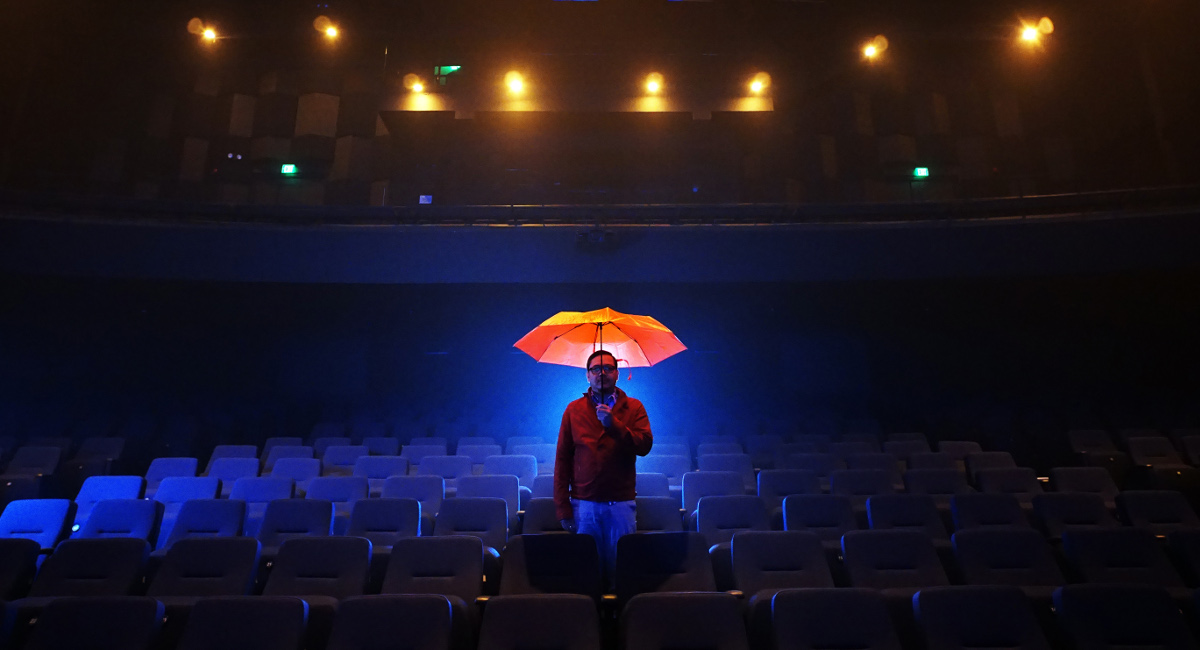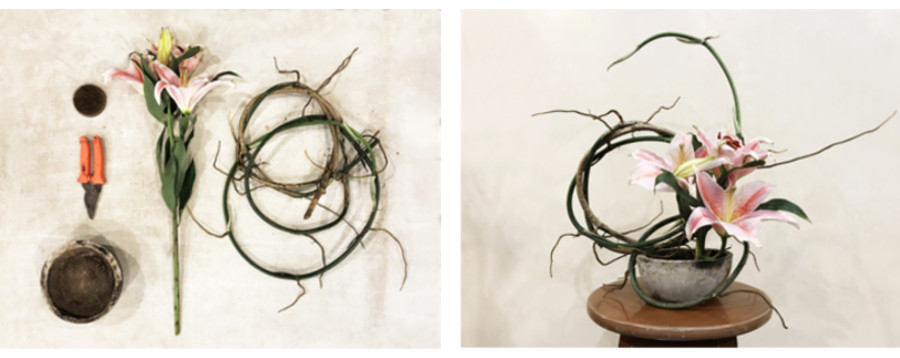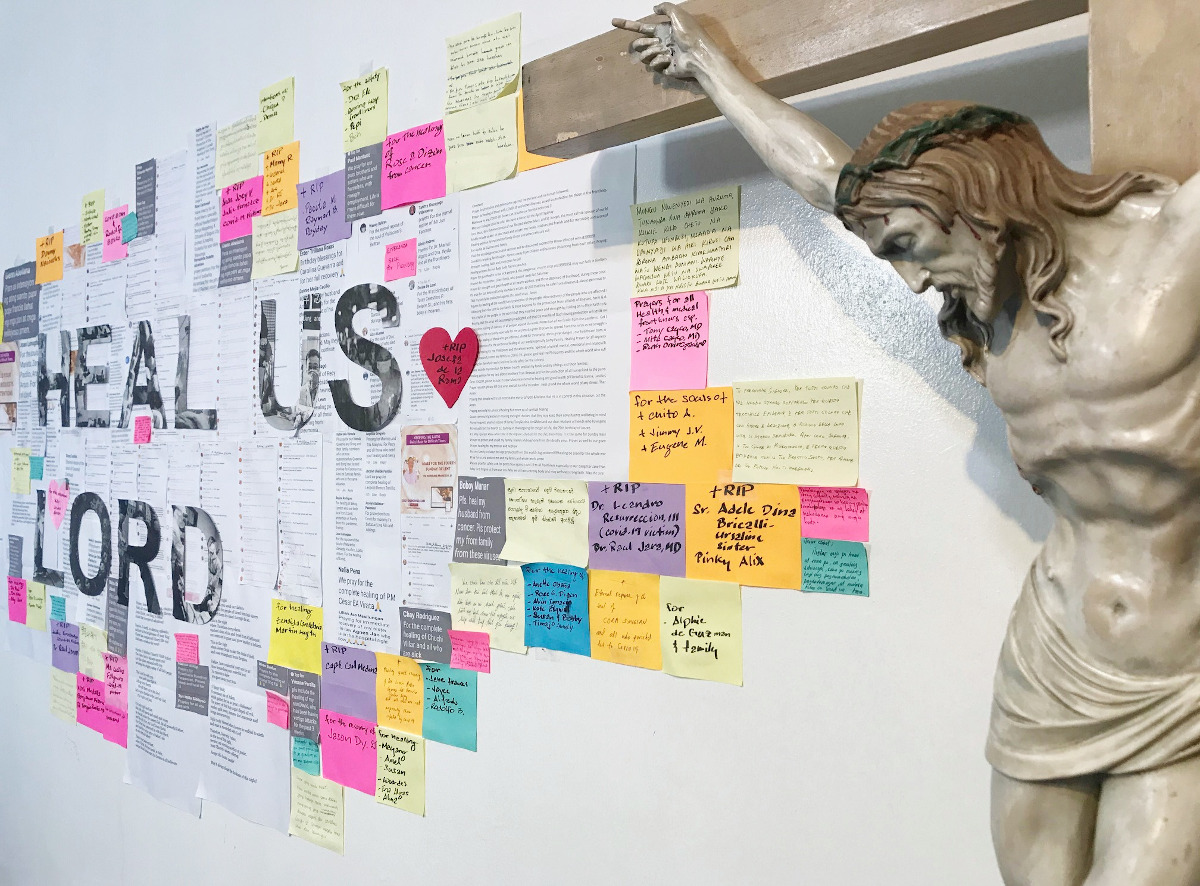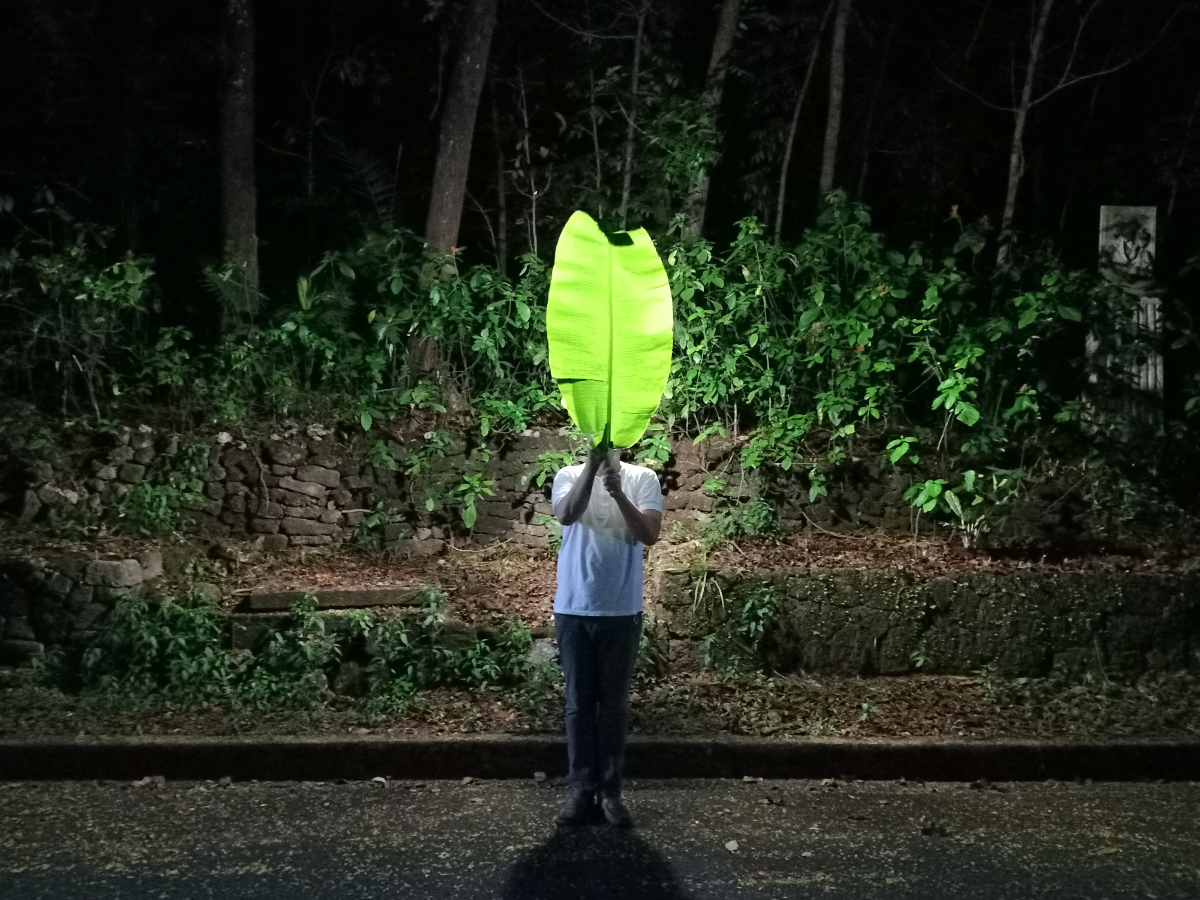
When Fr Jason Dy SJ started making ikebana-inspired floral arrangements for the daily online Mass of Jesuit Communications Philippines, it was something of a new experience.
“I was not taught ikebana…I’m not schooled in that tradition,” he says. “My own kind of artistic practice is doing research, looking at videos, and appropriating it in my own style. Though it is inspired by ikebana.”
Fr Dy who teaches at the Fine Arts Department of the Ateneo de Manila University, says he “resonate[s] with the idea of a connection of heaven and earth, and humankind in between”. He also has a deep reverence with the processes and cycles of nature, “from seedling, growth, maturation, withering, death, and again rebirth”. “There is a personal resonance as well,” he says, “the ritual of self-offering, which reflects the interior movements.”
Sometimes his arrangements include dried flowers and thorns. “Maybe that’s part of my personal fascination with the idea of death. Of impermanence, imperfection, incompleteness, the cycle of life and nature.”

While hothouse blooms are hard to come by these days, Fr Dy takes a creative approach. He considers the availability of flowers and plants either from the garden of the Jesuit Residence or donated cut flowers. He gets his inspiration from the Sogetsu-Ikebana school, or artists like Anya Gallacio, or even reality shows like The Great Flower Fight on Netflix. The Gospel reading and the specific liturgical celebration, as well as societal events, like the anniversary of the declaration of Martial Law in the Philippines or Independence Day, find a place in his floral arrangements.
In the early days of the online Mass, there was a plain white wall where Fr Dy created an installation of prayers. “People were sending in prayers and the idea was to add those to the wall. The words “Heal us, Lord” is from a composite of printed photos of people cut into letters. Then we added Post-it Notes and printed prayers until the whole wall was covered. It was a way to be in solidarity with the people and to pray with them, especially in this time of the pandemic.”

Eventually, JesCom’s larger Studio A became the new set. Fr Dy added the image of Mother Mary, and had more space to play around with decorating the back area with medium to large-scale floral arrangements. “Because of the Mass, I have had to wake up extra early to look for flowers and plants. There are days when I feel lazy to get up, but there’s the Mass and an arrangement to be made, and it pulls me out of my bed,” he says candidly.
Fr Dy, who joined the Society of Jesus after college with a civil engineering degree, recalls his fascination for art from childhood. “I grew up in a small town, and every Sunday my family would go to the beach. I was fascinated with the sea. I would look to the horizon and imagine–if I take a boat, would I fall off a cliff? I would wonder at the contents of the ocean. That sense of wonder triggered my own creativity.”
In his younger years, Fr Dy was often assigned to join art contests. The first time he used oil paint he won second place. “I was just brave–I did not really care to win–I was just there to paint,” he remembers. His father supported his artistic bent with lessons and he joined workshops when he could. “It was that kind of self-exploration, very organic.”

During his formation years as a Jesuit, Fr Dy still found time to make art. “In the novitiate, art was in my own space. I would paint during my retreat, decorate the chapel or prayer room– maybe that was the beginning of my installation art,” he says. But it was not until his Juniorate when the Juniors were exposed to art that something was triggered within. “My reflection at the time was that art was not a ministry; it was a hobby, a personal thing. I did not see its possibility yet as a ministry.”
During his Philosophy studies, he bonded with fellow brothers at the Arrupe International Residence who were also artists. “I was afraid: What kind of desire is this? I had to share it with my spiritual directors.” He remembers the on-going conversation with his wise spiritual director, Fr James Meehan SJ, who told him: “Every time you feel this urge to take pride in your work, just say to yourself, ‘Not to me Lord, not to me Lord, but to Your name be the glory.’” In theology, Fr Dy finally found a way to integrate art into his ministry. “When you find ways to integrate all the aspects of your ministries and passions, you find the possibility of expressing those and finding ways for them to be effective and even apostolic,” he says.

As a parish priest in Cebu City, Fr Dy found ways to make art that included the parishioners, from converting a garage into a gallery space to creating installations that were participatory and meaningful. “Art evolved as part of the needs of the community. I tried to integrate art in the rituals of the people.”
His floral arrangements go beyond technical practice–they are imbued with meaning, not only from the artist but also for the audience. “It’s not just making a decoration that’s pleasing, but also this kind of truth-seeking. People give me interpretations of the arrangements: they write prayers, a friend writes poetry in Filipino, artist friends illustrate them. I get messages from online parishioners whom I’ve never met, but the arrangements speak to them, becoming meaningful,” he says.
Fr Dy’s own process of coping with the pandemic has become a more contemplative practice of surrender, entrustment, and gratitude. “We need to be creative because it’s a new order or new disorder. As human beings, we are not only gifted with intelligence and freedom–we are gifted with creativity.”

